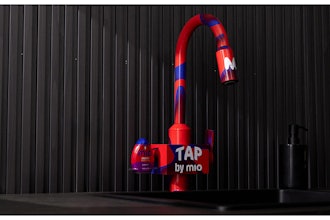If you lead a manufacturing business, why change a marketing strategy that has worked for decades?
In the 20th century, most manufacturers didn’t build recognizable brands. Cars, a notable exception, became status symbols and competed on image. But can you tell me the brand of your air conditioning unit? Or your flooring. There is a transition now of brand awareness for products that used to be seen as commodities. We are just becoming aware of more brands such as a “Ring” doorbell or “Nest” thermostat.
Manufacturers market to people who don’t necessarily buy from the brand itself. Rather, they visit retailers or dealers that also sell competitive goods. Therefore, “customer experience,” already a loaded term, is a unique beast in manufacturing.
So what’s different now? Why should your marketing strategy change? Let’s address those questions and illustrate how manufacturers are upgrading their marketing strategies.
A Modern Strategy
It Starts on the Web
Two decades ago, consumers researched goods at dealerships. Today, a buyer doesn’t walk into a store and drop $1,500 on grill. Rather, she researches online reviews, media outlets, and requests recommendations from friends.
These sources help the woman decide which grill to buy. The manufacturer’s website tells her how to get the grill. Most likely, the site refers her to a nearby dealer.
In this flow, the burden of creating awareness is on the manufacturer. The dealer will push the brands that shoppers are already inclined to buy.
Selling Got Sexier
Manufacturers are responsible for creating buzz directly with end consumers and competing to win the dealer’s favor. Decades ago, the dealer might prefer a brand based on margins or the chance to win a trip to a beach resort.
Now, dealers expect the manufacturer to support sales. They want mobile apps that can talk customers through options and personalize products. They want jazzy PDF printouts with custom pricing and incentives they can email to customers.
The manufacturer has a new job: Help the dealer eliminate choices. The web opened a Pandora’s box of brand choices, far more than any person can reasonably entertain. The dealer, with the right marketing and sales support, filters out the noise.
The Big Shift
The King Kong of change in manufacturing is the post-purchase relationship. In the past, that relationship began with a paper warranty card that the buyer (maybe) sent back to the manufacturer. Now, manufacturers offer Internet of Things (IoT) services and mobile apps.
For instance, people who own pools might depend on IoT sensors and a connected mobile app to tell them when to replace filters. That service protects the pool owner’s equipment and enables the manufacturer to sell consumables directly.
The service also influences future purchases. When it’s time to replace the pump, should the customer stick with the same brand? If it’s easy to quickly reorder, this eliminates the competition of generic brand filters that may be cheaper, because the app provides the best customer experience.
What That All Means
Given these three changes in the manufacturing industry, there are three areas where a modern marketing strategy should excel:
- Brand Awareness: People must know about your product before visiting a dealer
- Sales Enablement: Make it easier to sell your product than the competitor’s
- Digital Services: Your apps, IoT devices, and digital platforms must be useful
How It Plays Out
Let’s take a look at a hypothetical strategy modeled on a real one.
No. 1 - Brand Awareness
Let’s say you make wood-fired pizza ovens that people install in their backyards. You work with a network of home goods dealers who install the ovens. You sell accessories and consumables like aromatic woods, spice kits, and flour mixes.
Blistering heat tampered pizza oven sales in the Midwest this summer, but fall promises temperate weather. Now is the time to launch a campaign. You run display ads, paid Facebook advertisements, and Google AdWords. Your display ads retarget web users who search terms like “outdoor pizza oven.”
The campaign targets different locations with different content. The Chicago suburbs campaign displays a young family prepping pizza in a grassy, quaint backyard. A 30-something couple with two children in the burbs clicks the Facebook ad and requests a dealer visit.
No. 2 - Sales Enablement
Dealers could sell many different pizza ovens, but to make yours irresistible, you created a dealer app that personalizes oven designs.
The dealer visits your Chicago prospects, opens the app, and customizes an oven during the consultation. Blue stone patio? Tap to find matching oven colors. Dimensions? Here are the base models that fit the measured space.
The app becomes your dealer’s favorite selling tool. No other brand makes it so easy to present the perfect pizza oven.
No. 3 - Digital Services
Once the family buys an oven, the dealer invites the husband and wife to download the pizza oven app. It displays real-time oven temperatures and pushes notifications when a pizza is done baking.
From the app, the couple orders the woods, spices, and flour mixes for which the brand is famous. The app knows the appropriate temperatures for each flour blend, so the couple doesn’t burn any pizzas.
Two weeks before Halloween, the app sends a list of spooky holiday recipes. The couple throws an awesome party and gets so many compliments and questions about their oven. The dealer receives ten new requests for consultations.
A Formula?
We could sub other manufactured goods for that pizza oven and produce a similar plan. However, the awareness campaigns, dealer support tools, and digital service should look different for each product. The base formula leaves unlimited space for creativity.
That brings us back to the opening question: Why change your marketing strategy now? The answer is that dealers and customers have changed their behaviors. The web has trained consumers to believe that they can always find something better, and it has trained businesspeople to expect an ever-easier, faster process.
Can you be that brand both customers and dealers hope to find? With the right marketing strategy, yes.
Cara Caruso is VP of Strategic Solutions Leader at R2integrated.























